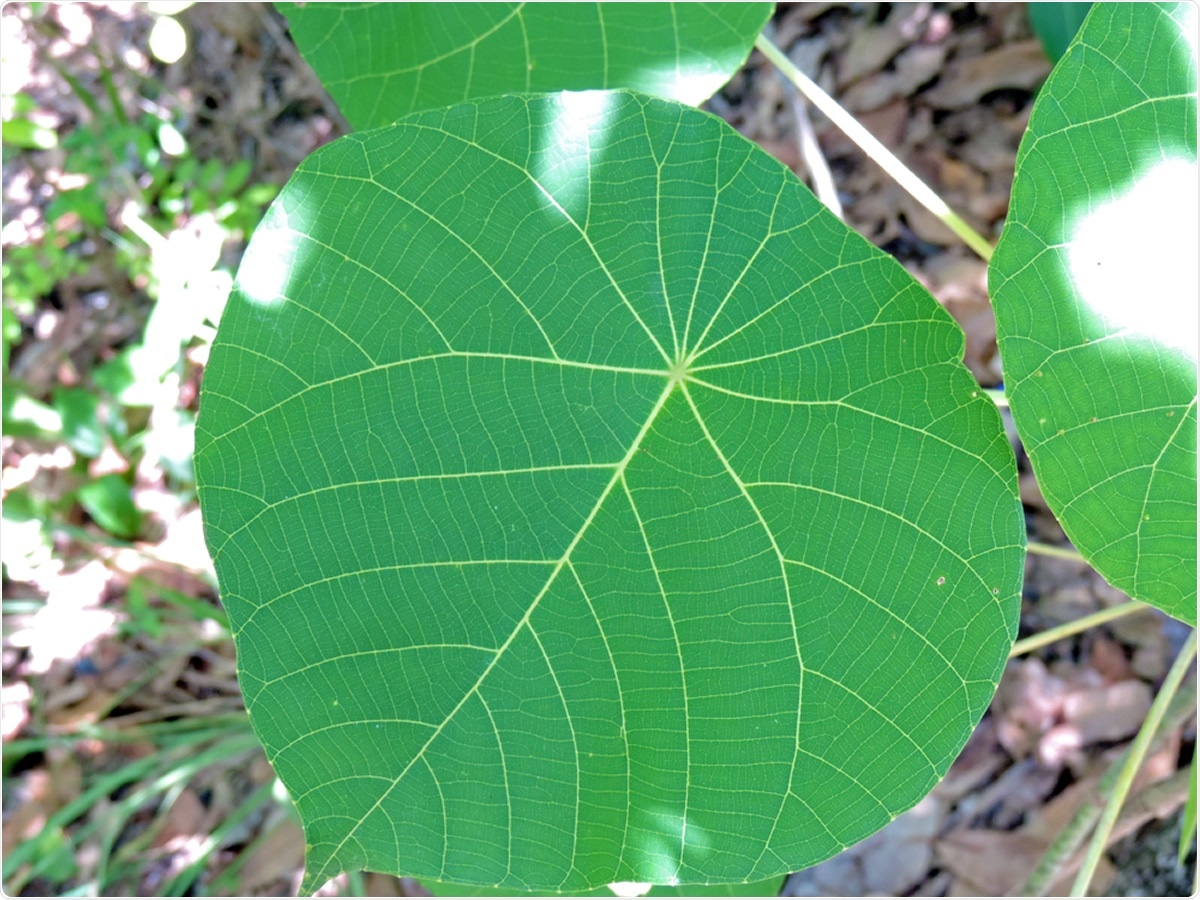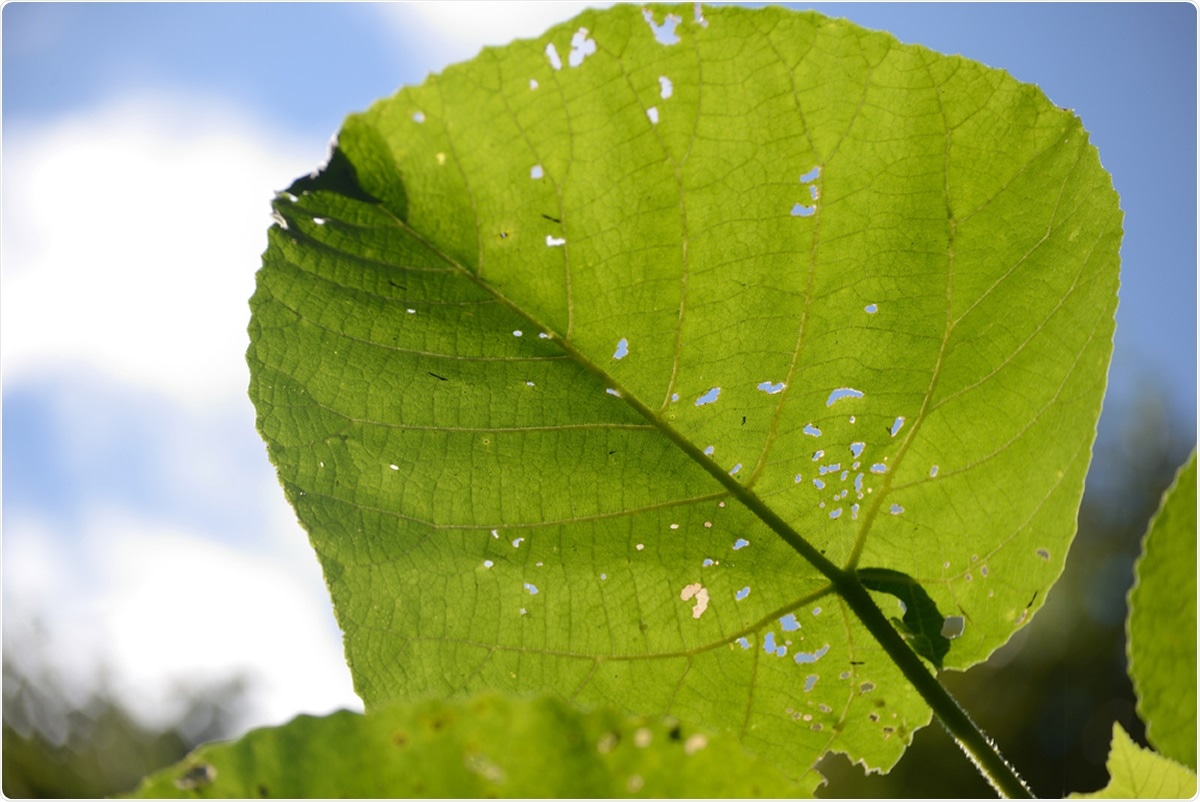Australia is well known for having many of the world's most venomous creatures, ranging from snakes, spiders, jellyfish, centipedes, fish, ticks, bees, and ants. 21 of the 25 most venomous snakes in the world are all from Australia. The country is also home to dangerous plants, like the Australian stinging tree.

Close up of the heart-shaped leaf of the most toxic of the Australian species of stinging trees Dendrocnide moroides, also known as the stinging brush, gympie stinger, moonlight plant among others. Image Credit: Victoria Tucholka / Shutterstock
Now, a team of researchers at the University of Queensland in Brisbane examined the toxins produced by two species of Australian stinging trees- the shrub-sized Gympie-Gympie (Dendrocnide moroides) and the giant Australian stinging tree (Dendrocnide excelsa).

Leaves of the fearsome giant stinging tree, Dendrocnide excelsa. Image Credit: Lakeview Images
The Gympie-Gympie stinging tree is one of the world's most toxic plants and may cause excruciating long-lasting pain. From these plants, the researchers found a new family of toxins, which they called "gympietides" after the name of the tree. Usually, these trees are found in the Northern Rivers region of New South Wales and at the tip of the Cape York Peninsula.
"Our research on the venom of Australian stinging trees, found in the country's northeast, shows these dangerous plants can inject unwary wanderers with chemicals much like those found in the stings of scorpions, spiders and cone snails," the researchers said.
Long-lasting pain
The Australian stinging tree is covered with hollow needle-like hairs called trichomes, which are bolstered with silica. Like common nettles, the hairs contain toxins and substances, which can induce extreme pain.
The scientists reported that stinging trees produce extremely persistent and painful stings upon contact of their trichomes with mammalian skin. The pain typically lasts for several hours, and intermittent painful flares may occur for days and weeks.
"The Australian stinging tree species are particularly notorious for producing an excruciatingly painful sting, which unlike those of their European and North American relatives can cause symptoms that last for days or weeks," Irina Vetter, associate professor at the UQ's Institute for Molecular Bioscience, said.
"Like other stinging plants such as nettles, the giant stinging tree is covered in needle-like appendages called trichomes that are around five millimeters in length—the trichomes look like fine hairs, but act like hypodermic needles that inject toxins when they make contact with skin," she added.
The team reported that the pain and stinging sensation might be tied to small-molecule neurotransmitters and inflammatory mediators. However, these compounds cannot explain the observed sensory effects.
In the study, published in the journal Science Advances, the team demonstrated that the venoms of the stinging trees contain unknown pain-inducing peptides.
Discovering gympietides
To arrive at the study findings, the team studied the stinging hairs from the giant Australian stinging tree, obtaining an extract from them. They separate them into their singular molecular contents. The substances produced extreme pain responses when they were tested in the laboratory.
The team discovered that the extract contains a small family of mini-proteins. Further, the team examined the genes that are found in the leaves of the Gympie-Gympie to find out which one could produce the toxin. From there, the team revealed molecules that can reproduce the pain response even when developed synthetically in the laboratory.
Gympietides contain an intricate three-dimensional structure maintained by links within the molecule that forms a knotted shape. Hence, the toxin is kept stable, which stays intact for a long time once it gets injected into the victim. The structure of the gympietides is similar to the toxins from the cone snail, scorpion, and spider venom, which affect ion channels in nerve cells that are known as mediators of pain.
Native stinging tree toxins match the pain of spiders and scorpions
"The 3D structure of these gympietides is reminiscent of animal venom toxins targeting the same receptors, thus representing a remarkable case of inter-kingdom convergent evolution of animal and plant venoms," the researchers wrote in the paper.
"Our work clarifies the molecular basis for the pain caused by these plants while enabling structure-activity and convergent evolution studies to define how ancestrally distinct peptides in venoms may elicit the same response at pain receptors," they added.
The researchers hope that the toxins will provide new information on how pain-sensing nerves function, paving the way for the development of novel painkillers.
Sources:
Journal reference: